Do you need to design shop lighting? Check out the best strategies to attract customers and increase sales through light.
Lighting designers know well that the best way to illuminate a shop is to lay the foundations for its success.
A poorly lit shop window certainly doesn't make you want to go in and look around.
Likewise, once inside, lighting plays a fundamental role to ensure that the customer is encouraged to stay to look at the products and buy them.
A store can sell the best product in its industry, but if the lighting design project does not provide a strategic study of lighting, it will push customers towards its competitors, who know how to enhance the product with the right lighting.
In this article, we will show you how to design shop lighting, analyzing all the factors to consider and the best strategies to implement.
In particular, we will take a look at:
- How to design shop lighting: the fundamental elements
- How many lumens does it take to illuminate a shop?
- The best strategies to illuminate a shop optimally
- How to place lights in a shop
- Strategic shop lighting: technique and aesthetics
How to design shop lighting: the fundamental elements
When it comes to designing shop lighting or lighting for a retail space, there are some general guidelines you should start with to avoid making mistakes and to guarantee that the client will get what they came for. Here's what they are:
- Consider the store’s concept. This evaluation is essential to set the right mood through the choice of decorative lighting capable of giving stylistic continuity and expressing a well-defined personality.
For example, a luxury store will have different communication needs than a lower-end retail space, as will a jewelry store versus a clothing store. - Match several models of designer lamps that are in line with the mood. This will allow you to create an original and never banal project.
- Introduce the main levels of illumination. Ambient lighting, i.e. well-distributed and uniform general lighting, will make the store immediately welcoming and can be provided using, for example, suspension lamps or ceiling lamps.
Task lighting, that is, the lighting of the various functional areas (such as the cash register, the counter, and the dressing rooms), is essential to ensure optimal visibility for both staff and customers.
Accent lighting is needed to create a focus of attention on design elements, clothing, and accessories placed on shelves, shelving, and in the shop window.
Wall lamps or floor lamps allow you to insert light sources laterally and from below and are perfect for accent lighting in a shop. - Choose a cold light, which will create a more energetic atmosphere capable of stimulating customers to purchase.
- Identify the shop’s task spots, such as displays, shelves, racks, shop windows, and hangers, and install functional light points for each of them.
This will guide the customer inside the store directing them to exactly where you want them to go.
These 5 elements represent the starting point for the lighting designing of a successful shop.
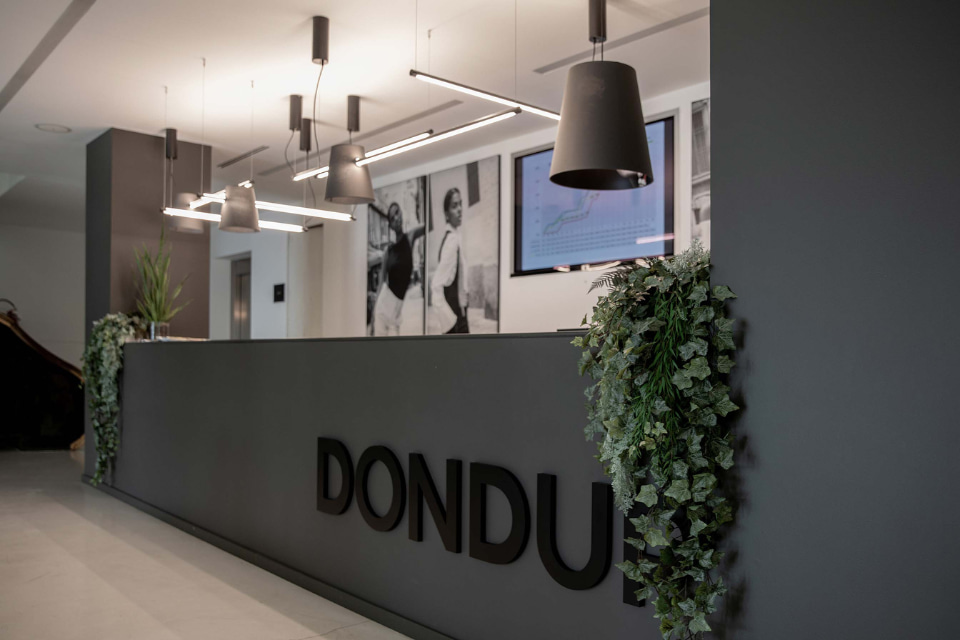
Cupido
How many lumens does it take to illuminate a shop?
To design a shop’s lighting, the first thing you need to know is how many watts and lumens are needed and what the most suitable color rendering index is, linked to the use of LEDs.
The watts are the unit of measurement that indicates the power of a lighting fixture and indicates the consumption of the lamp to be installed.
The lumens represent the unit of measurement of luminous flux and will tell the designer exactly how much light a particular fixture will emit in the shop once it is installed.
The quantity of lumens needed to illuminate an environment depends both on the surface to be illuminated and the intensity of the light, called lux.
So, lumen = lux x sqm.
For a shop’s lighting, experts suggest different values based on the area of the store:
- For sales service areas and passageways, it is advisable to opt for an intensity of light never less than 250 lux;
- For display areas, you will need about 500 lux.
These data represent valuable information for a lighting design project, to ensure the success of the lighting system that will be proposed to the customer.
When the work is commissioned to a lighting designer, they have all the relevant skills, but when the project is followed by more "generic" figures, it will still be possible to easily access this data by consulting the technical data sheets of the products themselves.
Another fundamental parameter is the color rendering (usually indicated by the abbreviation CRI or IRC), i.e. a datum that indicates how much that particular light source will be able to express colors realistically. Bearing in mind that a color rendering index of 100 is that of the sun, the closer you get to this number, the more realistic the color will be.
An optimal color rendering is even more important in cases where the product that the customer sells is strictly linked to visual perception as, for example, in the case of a clothing store.
The best strategies to illuminate a shop optimally
To strategically illuminate a shop you need to proceed step by step, by first dividing the structure into 3 sections, starting with the section you see first and so on, that is, the shop window, the entrance, and the interior.
Each of these 3 areas will require a specific type of lighting aimed at achieving a certain objective. Let's take a closer look at these.
How to illuminate a shop window
A shop window represents his real business card and, as we have said, it has the power to attract or repel potential customers.
Therefore, it is no coincidence that a lively shop window, full of lights and colors, will be more likely to capture the eye and curiosity of passers-by, enticing them to come in.
The first impression a visitor has of the shop window will determine their decision to stop and look or just quickly pass by.
A successful shop window doesn’t just display products; it manages to inspire by telling a story, even through light.
To enhance and make the most of this space, cohesive lighting with the concept and with your target is the best solution.
If you are designing the lighting for a clothing store (and more), you could illuminate the mannequins using adjustable projectors or track lights, which can be moved at will depending on how the shop window is set up.
But for those who want to give the shop window a more welcoming look, it is also possible to resort to decorative floor or table lamps.
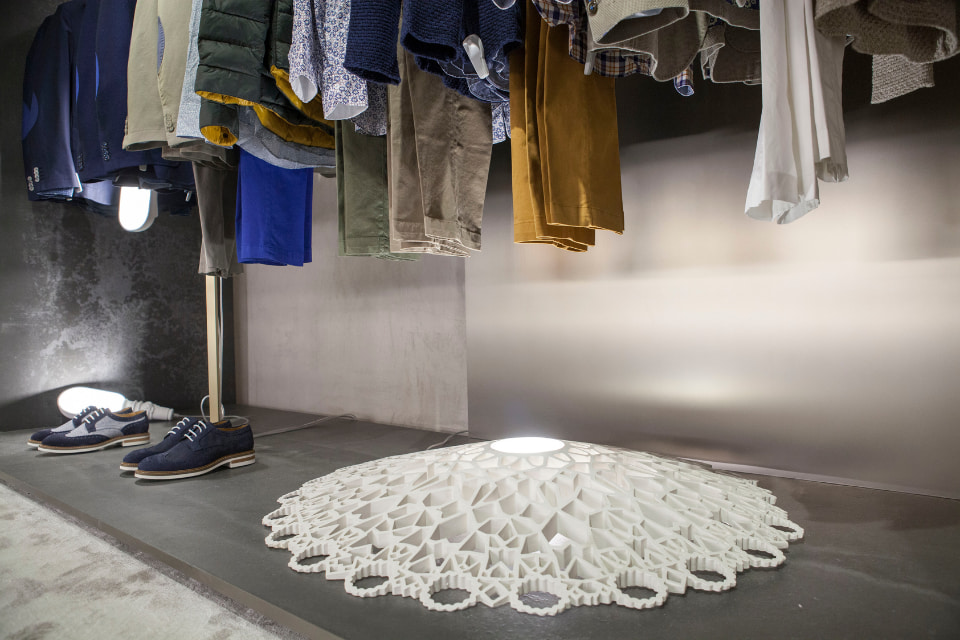
Notredame
Each store usually has a shop window and display cases inside for potential customers.
This does not mean that they should be lit in the same way — far from it.
If the criteria that must guide the choice are roughly the same, there is however a substantial difference: the shop window is a space in which the luminous fluxes are dispersed due to the presence of the glass window.
This means that the light levels of the shop window must be higher than the internal ones and the lighting must be focused on the products in a specific way to enhance the details and not the generic whole.
With regard to internal displays, on the other hand, you should always make sure the lighting levels are high, and lower those in transit areas.
Another factor to consider is that the customer doesn't stay in the same place when they enter a store. More often than not, they are interested in a product, take it off the display then move to a different area to look at it.
The project must identify which areas the customers may go to to take a more in-depth look at the product and must ensure that the light and color rendering are optimal in those spaces.
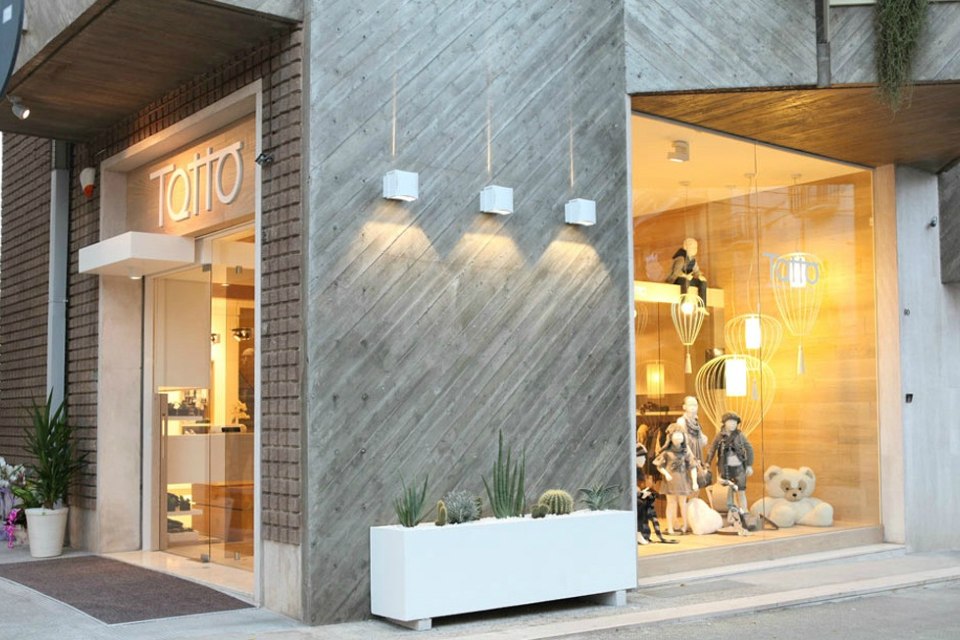
Cell
How to illuminate a shop entrance
The entrance to a shop is another important space which, if well exploited, is able to affect the perception of passers-by and transform them into potential customers.
Along with outdoor lighting, the entrance is the real strong point of the lighting project for a shop: through a specific study of the right light to enhance this area, customers will have a precise idea of the shop’s identity, the product it offers and, above all, of its quality.
Dedicating part of the lighting to the entrance for those who have not yet entered the store will help attract more customers instead of creating disinterest.
What's important is that the light accompanies customers from the shop window to the inside, as if it takes them by the hand and guides their attention towards the products.
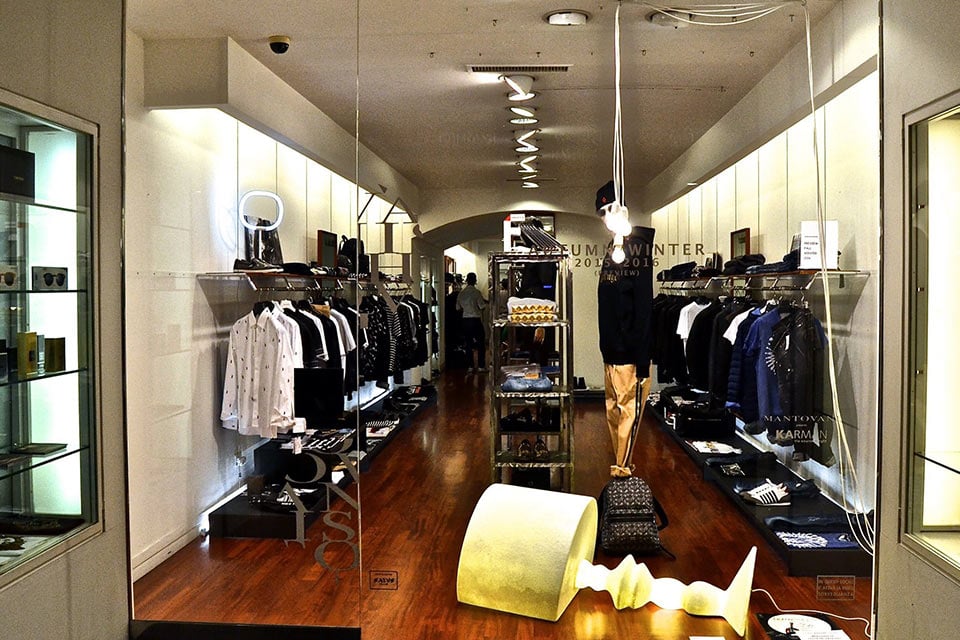
Alibabig
How to illuminate the interior of a shop
The whole project gravitates around the protagonist of the store — the product.
The imperative is to choose adequate lighting to display it so that it is perceived in the best possible way.
So to understand which installations to choose and where to place them, first you need to understand what article it is, what characteristics it has, and how light can make it seductive and attractive.
Choosing a lighting fixture for a shop based only on technical characteristics such as watts and lumens will result in failure.
The interior lighting of a shop, being related to the type of item offered, shouldn’t really be designed according to the lumens. Instead, it should be designed according to the basis of the color rendering.
For example, a grocery store will require a different shade of color than a cosmetics shop which, in turn, will have different needs than a stationery shop or bookshop.
A typical mistake is to illuminate all the internal displays in the same way.
On the contrary, to design a shop’s interior lighting, the secret is to play with light and create some interesting bright contrasts.
This result can be achieved, for example, through dimmable LED spotlights, which allow you to accent the light in the points where you need to enhance the product and set good general lighting for the rest of the space.
Or it is possible to use these lighting fixtures as accent light and use recessed spotlights or designer suspension lamps for general lighting.
How to place lights in a shop
We have seen the general indications on how to design the lighting of a shop according to the different areas.
Now let's look at an overview of strategic points where you can place the lights:
- On displays, perhaps opting for some creatively designed wall lights, which, in addition to providing direct light to the products, represent a real furnishing piece.
Need an example for a clothing store that makes originality and the desire to amaze its distinctive feature? The lamps of the Karman Zoo collection.
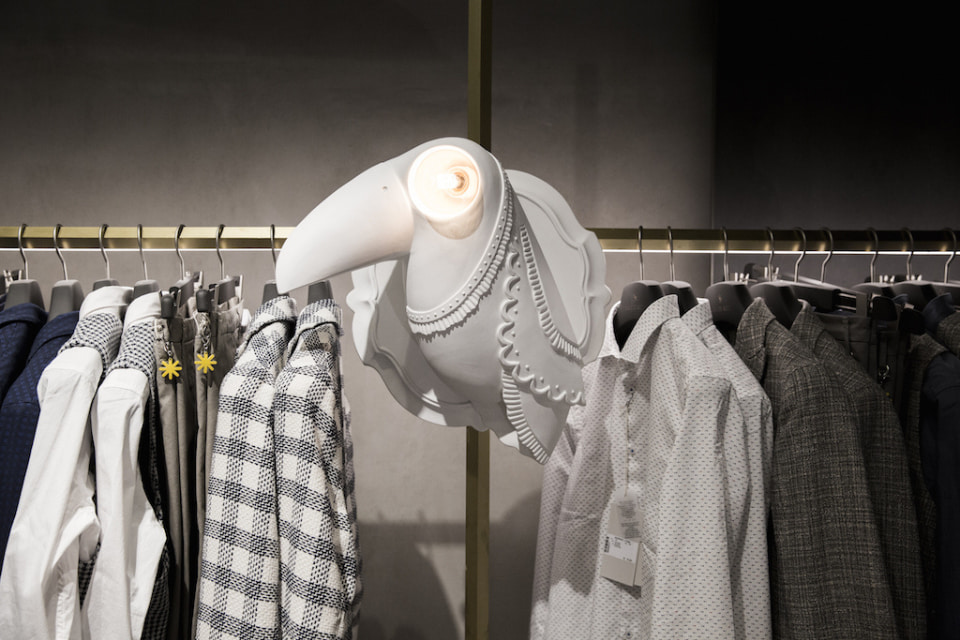
Cubano
- In the dressing rooms, fundamental places where the customer will decide whether to make their purchase. In this case, ceiling lights capable of guaranteeing a chromatic rendering index (CRI) higher than 90 are best.
- Above the cash registers. Here both salespeople and customers need task lighting that can be supplied, adding a touch of style, via one or more suspension lamps in line with the overall mood.
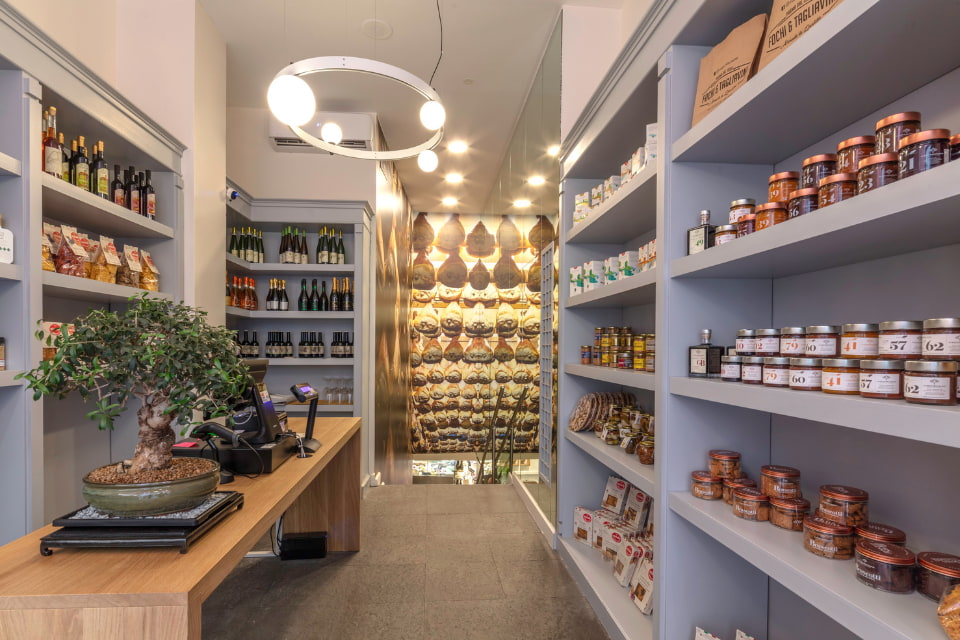
Stant
Obviously, also in this case, an assessment must be made based on the product category to realize a project ad hoc for each shop.
Strategic shop lighting: technique and aesthetics
We have seen how, when it comes to designing shop lighting, we should always keep in mind that every space needs specific lighting to make the most of the items on display by choosing the right lamps.
Well-studied lighting is capable of finding the perfect balance between decorative lighting and technical lighting.
So, an important aspect to consider is the design of the lamps used, an element that plays a strategic role in characterizing the style of the store and further enhancing it, making it unique.
Choosing the design of decorative lamps carefully, in addition to the technical aspects, will help the store to attract more customers, giving them a feeling of professionalism and great attention to detail, factors that represent a further way to affirm the personality of the shop and to distinguish it clearly from competitors.




